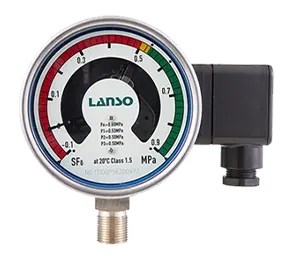SF6 Relay plays a crucial role in the power industry, used for monitoring and maintaining the safe operation of power equipment. However, the SF6 Relay must function normally in various harsh environments, including low temperature and extreme temperature conditions. This article will discuss the testing methods of SF6 Relay under these extreme environments to ensure its reliability and performance.
SF6 Relay Inspection Equipment: Constant Temperature Control Box and Calibration Platform
SF6 Relay inspection equipment mainly includes constant temperature control box and calibration platform. Both of them must work together in extreme temperature environments to ensure accurate testing. Before testing, the temperature can be controlled using the constant temperature control box, typically ranging from -40℃ to +60℃. Then, place the SF6 Relay within this temperature range, ensuring its internal and external temperatures are consistent with the set temperature in the constant temperature control box. This is the first step to ensure accurate testing.
A connection must be established between the constant temperature control box and the calibration platform to ensure effective adjustment of internal gas source pressure and temperature. Calibration software reads and stores test values based on different temperatures. These values include contact action values and contact return values. Due to the complex relationship between the performance of SF6 Relay and temperature and pressure, it is essential to use these data to determine if the relay is functioning properly.
SF6 Relay Inspection Equipment Technical Features
SF6 Gas Inflation System: This system conveniently provides gas replenishment for the relay, ensuring that the gas inside the relay is sufficient during testing.
Two Sensors: The calibration device is usually equipped with a relative pressure sensor and an absolute pressure sensor to accommodate different types of SF6 Relay. These two sensors are used to measure the values of the relay.
SF6 Gas Detection: In traditional relay calibrators, there is a certain measurement error. Therefore, in practical operations, SF6 gas detection is usually used to improve the efficiency and accuracy of detection.
SF6 Relay Test Precautions
When conducting the test of SF6 Relay, special attention needs to be paid to the following issues:
Ensuring the Accuracy of Pressure Readings
During the test process, sometimes the values on the relay do not match the pressure values collected by the system, resulting in some errors. This may be caused by:
Pressure imbalance due to changes in the pipeline: Due to the different thickness of the pipeline, momentary pressure imbalance may occur, which affects the accuracy of the data.
Pressure differences caused by different installation positions: In a low-temperature environment, relays near the gas supply port and the far end may display different pressure values. This may be due to an imbalance in the installation position.
Delayed readings due to remote location: The distant placement of the relay from the pressure sensor can result in a decrease in the timeliness and accuracy of readings.
To address these issues, improvements to the piping system can be implemented. This may involve replacing the mounting bracket of the relay, adjusting its position to ensure consistency with the distance from the gas supply port. Additionally, adjusting the position of the pressure sensor, installing it closer to the relay's end, can enhance the timeliness and accuracy of pressure readings.
Ensuring Accuracy in Temperature Readings
During testing, it is crucial to ensure the accuracy of temperature readings. Sometimes, under set temperatures, the actual temperature values read may differ from expectations. This discrepancy could be attributed to the liquefaction of SF6 gas and the release of heat. To guarantee that the actual environmental temperature matches the set temperature, the temperature sensor should be positioned away from the gas path to minimize heat influence.







